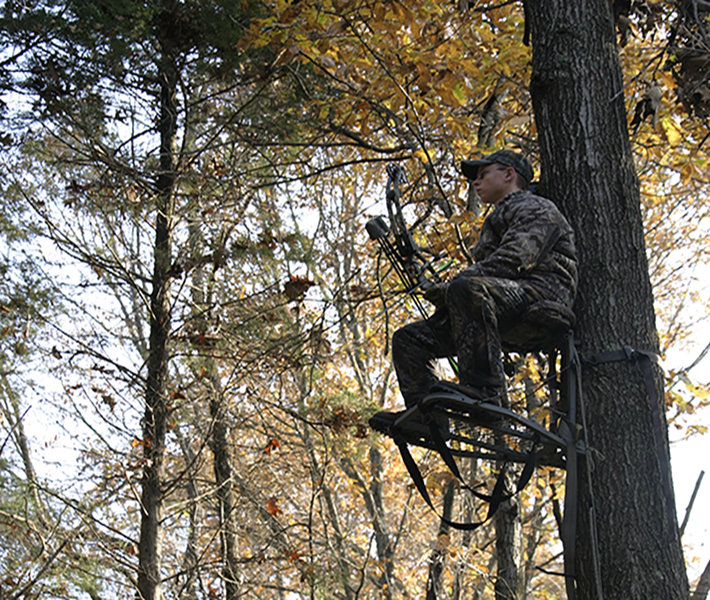
Standards Help Make the Outdoors Safer
According to a recent report from the U.S. Department of the Interior, 101.6 million Americans, (40% of the U.S. population over 16) participated in hunting, fishing, and other wildlife-related activities in 2016. Overall, outdoor recreation is a $156-billion industry, and it continues to grow.
In recent years, some U.S. states have begun seeing more people injured by falls from treestands, an open or enclosed platform secured to trees to provide a vantage point for hunting or wildlife viewing. The vast majority of these injuries are sustained by hunters.
At the University of Wisconsin Hospital and Clinic alone, 65 patients were admitted for spinal cord injuries from treestand falls from 1999 to 2017.
In 2017, the first year the state of New York kept records of treestand falls, five fatalities were recorded, all sustained while hunting. To put that in perspective, only one fatality came from a firearm while hunting in that state.
READ MORE: 6 Standards Making a Difference for the Environment
To address the inherent risks of using a product that elevates someone six or more feet off the ground, ASTM International created the subcommittee on treestands (F08.18) in 2015 under the auspices of the sports equipment, playing surfaces, and facilities committee (F08).
“Treestand standards have been under development since 2001,” explains John Louk, Executive Director of the Treestand Manufacturer’s Association and also chair of the treestand subcommittee. “However, until 2015 we were developing standards for treestands under the subcommittee on archery products. But we as an industry felt like it was important for us to separate from archery and form our own subcommittee to work more specifically on treestands for a range of different uses.”

Falls from treestands have been on the rise in recent years.
Louk cites three standards in particular as being supportive of outdoor safety:
Standard Practice for Testing Treestand Load Capacity (F2120)
This was the first in a series of standards that the subcommittee worked on and was intended to maintain uniformity in evaluating load capacity of treestands while also laying the groundwork for additional standards. (Note that F2120 is being revamped and subcommittee members intend to subsume it under F3249.)
Standard Specification for Treestands, Climbing Sticks, and Tripod or Tower Stands (F3249)
This specification includes safety device requirements such as full body harnesses to protect from falls. “That was a major development when we required all treestands to include a full body harness,” Louk says. “It was an important step for hunter safety.”
F3249 also consolidates treestand requirements from several other standards into one new standard, says Louk. “We reached a consensus as a group that it would be easier to write a new standard rather than revise multiple individual standards.”
The standard establishes and clarifies the requirements for minimum warning labeling, clarifies the instructional content in F2123, and includes a table that references the various tests already stated in F2126, F2125, and F2531.
Standard Test Method for Treestand Fall Arrest System (F2337)
This standard is a test method that measures the maximum arrest force and dynamic strength of a treestand’s fall arrest system and full body harness components. “We established a new pass-fail criterion which limited the total fall distance to 24 inches, which specifically addresses the length of a potential fall,” Louk explains. “So it allows the user the best opportunity to recover.”
Looking ahead, the treestand subcommittee is turning its attention to developing new test methods for different types of stand technologies. This includes vertical and horizontal static load tests for stick ladders, static load tests for two-person ladders, and even tests for new attachment designs that help people secure the ladder to a tree at ground level before ascending.
Other innovations the subcommittee is working to address include treestand safety ropes and tree saddles, a hybrid design that’s part treestand and part harness.
“Technology is improving to the point that it’s reducing the likelihood of hunters and other users falling as much as they have in the past,” Louk says. “Today’s ladder stands don’t spin or pivot off of the tree like they used to, and standards development plays a key role in reducing the number of falls with the equipment being used. ”
Tim Sprinkle is a freelance writer based in Colorado Springs, Colorado. He has written for Yahoo, The Street, and other websites.
 SN Home
SN Home Archive
Archive Advertisers
Advertisers Masthead
Masthead RateCard
RateCard Subscribe
Subscribe Email Editor
Email Editor